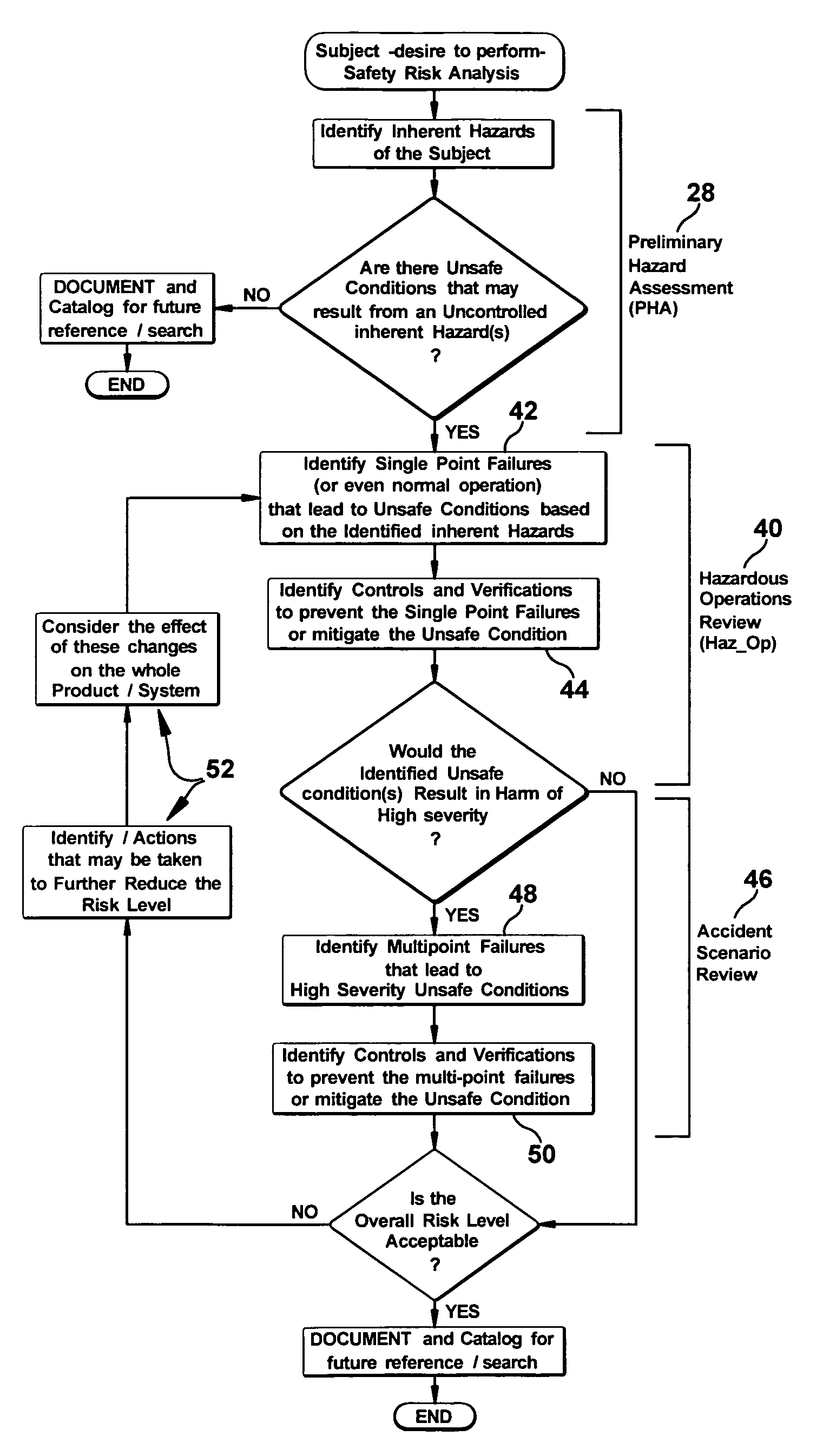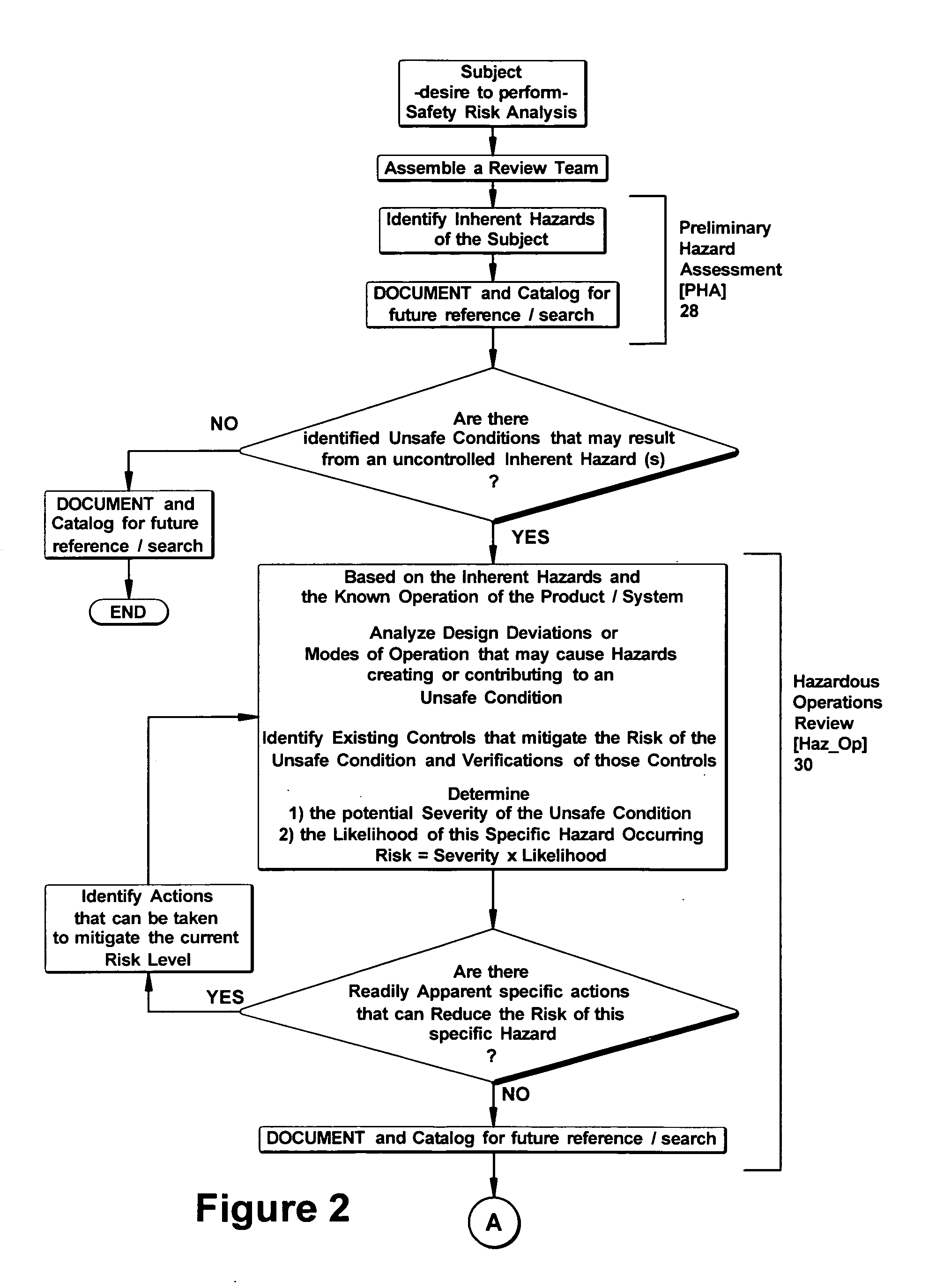Method for assessing reliability requirements of a safety instrumented control function
- Summary
- Abstract
- Description
- Claims
- Application Information
AI Technical Summary
Benefits of technology
Problems solved by technology
Method used
Image
Examples
Embodiment Construction
[0023]FIG. 1 is a block diagram illustrating of a safety review process to evaluate hazards for a product, system or method (collectively referred to as the product), as embodied by the invention. In a first step 10, the product is segmented into sub-systems or sub-components, if necessary. Each sub-system or sub-component 12 is individually analyzed for safety using a three-step process that generally includes a preliminary hazard assessment 14, hazardous operations review 16 and an accident scenario review 18. The hazard assessment 12 and hazardous operations review 14 may be applied individually to each sub-system 12, and the accident scenario review 18 may be applied to the product as a whole.
[0024]The preliminary hazard assessment may be conducted as a “brainstorming session”20 to identify the inherent hazards associated with the product and its operation. A determination is made as to whether any of the inherent hazards might become a safety-compromising hazard. If a credible ...
PUM
 Login to View More
Login to View More Abstract
Description
Claims
Application Information
 Login to View More
Login to View More - R&D
- Intellectual Property
- Life Sciences
- Materials
- Tech Scout
- Unparalleled Data Quality
- Higher Quality Content
- 60% Fewer Hallucinations
Browse by: Latest US Patents, China's latest patents, Technical Efficacy Thesaurus, Application Domain, Technology Topic, Popular Technical Reports.
© 2025 PatSnap. All rights reserved.Legal|Privacy policy|Modern Slavery Act Transparency Statement|Sitemap|About US| Contact US: help@patsnap.com



